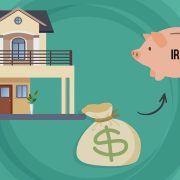Younger Homebuyers are Vanishing – How Should Self-Directed Real Estate IRA Owners Position Themselves?
Homebuyers are getting older – and very young home buyers are disappearing from the market. That’s the latest according to the National Association of Realtors, which recently released their 2019 Profile of Home Buyers and Sellers. Self-Directed Real Estate IRA investors should pay close attention to the data, because they provide clues to the market and what sorts of properties may outperform the averages in future years.
The median homebuyers’ age in 2018 reached an all-time high of 47 – well into middle age. And the median household income for homebuyers also increased to $93,200. Those are nationwide numbers, so obviously, season to taste for your own market.
The average age of the median first-time homebuyer also increased this year to 33 – the oldest median first-time buyer’s age since at least 1981.
To put it in perspective, the median age of all homebuyers in 1981 – first-time and otherwise – was 31. In October of that year, the average 30-year mortgage reached 18.45 percent. That’s a bad credit card rate today, but the year Reagan took office, people were buying homes at that rate – at an average cost of $82,500.
So, both the market and the buyers are very different than they were then.
Interestingly, while more than 61 percent of homebuyers last year were married, single women are more likely to buy a home now than single men – by a significant margin: 17 percent of buyers were single women, compared to 9 percent single men.
So, what can we take away?
First, selling ‘starter homes’ is going to be a tough market for a while. The ‘fat part of the bell curve’ appears to be moving up-market, with a smaller fraction of young parents and people just starting out.
Young people are also having fewer children, which further affects demand for the starter three-bedroom house in modest neighborhoods. So, there may not be too many huge bidding wars on these homes in the coming years from owner-occupants.
Why are younger Americans not buying homes? A number of reasons:
Developers haven’t been focusing on affordable housing. Higher materials costs are driving builders to higher price points, as it’s very difficult now to build quality and still make housing that’s affordable to middle-class families, who’s wages have been stagnant for many years, until very recently.
Younger buyers are also squeezed by student loan payments: The average college graduate who owes student loans starts out with over $30,000 in student loan debt, at a typical monthly payment of $200 to $299, according to Federal Reserve data. That’s making it more difficult for young graduates to save, and it’s also counting directly against their debt-to-income ratios, making it more difficult for them to qualify for a mortgage big enough to purchase a home.
We’re also seeing falling demand for larger and luxury homes: Aging Baby Boomers looking to downsize are having trouble finding people to sell these homes to. So larger homes and McMansions may face a tough market over the coming couple of decades, as more and more Boomers age out and pass on.
Meanwhile, all those 18-to-46-year-olds are going to have to live somewhere. And if they aren’t buying, then they’re going to have to rent. So, demand for affordable rental housing should be strong for some time to come.
Only 16 percent of homebuyers started their home search by contacting a real estate agent. They were far more likely to start their home search online – where FSBO sellers who are savvy marketers can reach them. However, that doesn’t seem to be translating to an advantage for FSBO sellers looking to reach buyers directly: 89 percent of buyers recently purchased their home through a real estate agent or broker, while just five percent purchased directly from a builder or builder’s agent.
Millennials are now becoming homebuyers. But it’s going to be a while before Generation Z comes into its own as a homebuyers’ market, as they are being especially hard hit by student loans – which explains the popularity of student loan repayment programs among younger voters. They’re feeling the pinch more than most.
Self-Directed Real Estate IRA investors should think of focusing their selling and flipping efforts at older and more established purchasers. But they can do very well in many markets by focusing on rental properties for younger professionals in their 20s and 30s, who may be trying to save money for a down payment but have not quite cleared that hurdle.
Interested in learning more about a Self-Directed IRA Real Estate? Contact American IRA, LLC at 866-7500-IRA (472) for a free consultation. Download our free guides or visit us online at www.AmericanIRA.com.









